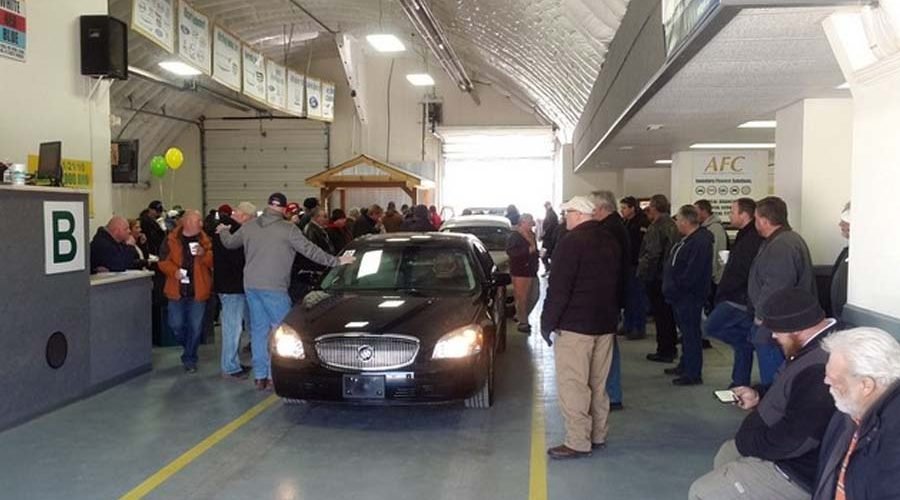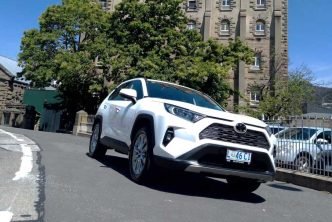When people look for new or used cars, they often think of going to a dealership first, but the way people buy cars is changing. Many now think of looking online for their next car before they consider going to a dealership. Today, people shop for cars on Craigslist, eBay Motors, at an online public auto auction, Facebook marketplace, and online classified ads from their local newspaper. While there is a large selection of cars and trucks to choose from when you use these options, the public auto auction is one of the oldest ways people shop for cars.
Table of Contents
In the Beginning
1938 – The American South was suffering from a lack of cars thanks to the Great Depression, so local livestock auctioneers started bringing a few cars from northern states to sell right alongside a prized calf or a tractor. It made sense to offer something those in attendance couldn’t typically find at an auction.
J.M. Rawls held the first official auto auction
1948 – The National Auto Auction Protection Association was formed by C. B. Drake to give the new auction industry a voice. Eventually, they changed their name to the National Auto Auction Association (NAAA) in 1954. They offered memberships to customers, media personnel, automotive industry leaders, government leaders, and others interested in auto auctions.
As the auto auction industry grew, it narrowed its focus to dealer-to-dealer sales rather than opening the auction to the public. Dealers used the auctions to buy inventory for their lot or to get rid of excess inventory, and they still use the auction this way today.
Selling Off Fleet Cars
1963 – Chrysler used the auto auction to sell the cars they bought back from rental and fleet companies. They may have been the first to do a buy-back and sell off the cars, but many businesses like financial institutions and insurance companies still use the auto auction to dispose of inventory.
Most auto auctions around the United States are closed auctions and still only let dealers in, but there are more and more auctions opening to the public. There is a need for public auctions since people’s buying habits are changing. This is especially true regarding government auctions of used police cars, used trucks, and vans. Even the FBI and DEA sell off confiscated cars and trucks that the public can buy.
New Regulation
1986 – As more people got involved with buying and selling at auctions, there was a need for more regulations surrounding car sales in general. With the help of the NAAA, the Truth in Mileage Act was passed in 1986. This federal law was added to the Motor Vehicle Information and Cost Savings Act and requires that no ownership can be transferred unless the application for the title has the previous title attached, and the new title must have the odometer reading printed on it. This was designed to cut down on odometer fraud.
Also, auctions must keep records of the name, VIN, and odometer reading of the vehicle at the time they took the vehicle in for auction.
The Emergence of the Classic and Luxury Car Auctions
1954 – Besides the regular auctions, interest in classic car auto auctions was emerging. Hemmings Motor News is considered the “Bible of the Collector Car Hobby since 1954”, and they hold an auction or two every year for people who are only interested in classic cars and muscle cars. They publish a monthly magazine that showcases cars and has a large classified ads section where all types of classic cars are for sale. Serious classic car collectors like Jay Leno read Hemmings.
1971 – Barrett-Jackson also joined the auto auction boom, but their focus has been on luxury cars. Their first car show was in 1967 to raise money for local needs in the Scottsdale, Arizona area, but they held their first auction in 1971. It was soon an annual event, and today, their auctions are broadcast on television. They hold events around the United States, and they are open to the public.
Barrett-Jackson and Hemmings are two examples of public auctions that draw celebrity crowds and sell cars that you don’t see on the streets every day.
Conclusion
What started in the South with a few farmers and a cow has become a nationwide event. Public car auctions are available in all states and online.
The online auction opened up bidding on cars to the public from remote places, increasing the popularity of the public auto auction. People no longer have to worry about getting a dealer license to buy a car or driving miles to show up in-person to bid. They have access to hundreds of auctions every day, and they don’t have to leave the comfort of their home to bid on a car. Even eBay Motors has an auction feature.
As more people get comfortable shopping for their cars online, there could be a huge increase in online public auto auctions that feature all types of vehicles and government surpluses. This will benefit perspective car buyers nationwide.





